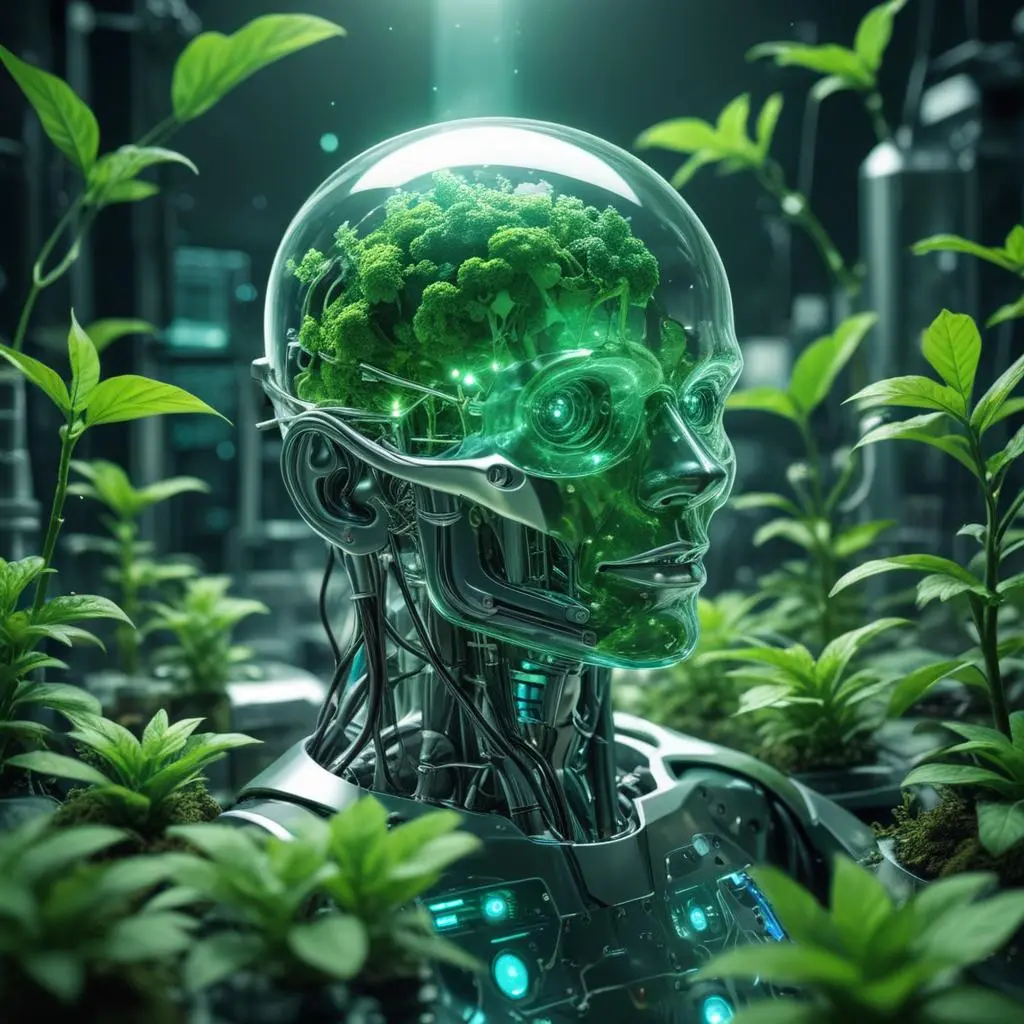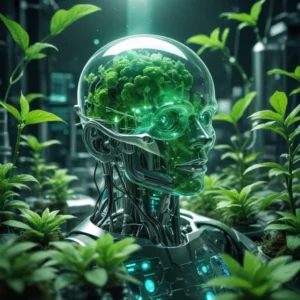
Top 10 Green Headways Changing Our Future As the overall neighborhood sees the squeezing need to fight natural change, innovative green advances are emerging as fundamental instruments for propelling acceptability and decreasing environmental impact.

These enhancements promise to disrupt various associations, expand energy possibility, and plan for a more environmentally friendly future.
TABLE OF CONTENT
-
Sun-focused Power
-
Wind Energy
-
Electric motor vehicles
-
Hydrogen components of energy
-
Advances in Reusing
-
Smart Matrixes
-
Vertical Agriculture
-
Vertical Agriculture
-
Bioenergy
-
Key words
-
Key points
The following ten significant green advancements are significantly altering our reality:
1. Sun-focused Power
Sun arranged power has become one of the most obvious and accessible harmless to the ecosystem power sources. Advances in photovoltaic (PV) development have on a very basic level dealt with the capability of sun controlled chargers, making them more sensible and extensively open. Solar-powered rooftop tiles and adaptable solar-powered chargers, for instance, have improved the integration of solar power into residential and commercial structures. Additionally, solar-based energy capacity systems, such as Tesla’s Powerwall, enable households and businesses to store a lot of energy for use in low-light conditions, increasing the utility of solar power and decreasing reliance on the grid.
2. Wind Energy
Wind energy furnishes the power of the breeze to create power, offering an immaculate and harmless to the ecosystem power source. Current breeze turbines are more convincing and more noteworthy than later, empowering them to convey more energy. Toward the ocean wind farms are particularly uplifting, as they can take advantage of additional grounded and all the more consistent breezes found over the oceans. Countries like Denmark and the UK are driving the way in offshore wind energy, with colossal hypotheses and huge extension projects contributing fundamentally to their public organizations.
3. Electric motor vehicles
By reducing emissions of ozone-depleting substances and reducing dependence on petroleum products, electric vehicles are altering the transportation sector. Movements in battery improvement, as strong state batteries, are refreshing the compass and reasonability of EVs. Electric vehicles from companies like Tesla, Nissan, and Chevrolet are becoming more affordable and efficient, and advancements in charging infrastructure are making it easier for consumers to buy EVs. Additionally, electric options for public transportation, such as trains and buses, are becoming increasingly common in metropolitan areas, reducing urban communities’ carbon footprint even further.
4. Hydrogen components of energy
Hydrogen energy units are a promising new development for the power and transportation industries. These phones make power by joining hydrogen and oxygen, conveying water as the primary outcome. Hydrogen power gadgets offer a high energy thickness and can be refueled quickly, making them sensible for a large number of utilizations, from vehicles to conservative power systems. Major automakers like Toyota and Honda are investing in the development of hydrogen energy units. Vehicles like the Toyota Mirai demonstrate the potential of hydrogen-controlled vehicles.
5. Energy-Useful Design Materials
The improvement business is embracing green headways to diminish the natural impact of designs. The energy efficiency of designs is being improved by creative materials like cross-covered wood (CLT) and protected substantial structures (ICFs). Green rooftops, which are covered in vegetation, also help control building temperatures, reduce stormwater runoff, and improve air quality even more. By reducing the need for fake lighting and environment control, savvy glass technology, which can change its simplicity in response to the conditions outside, further increases energy reserve funds.
6. Advances in Reusing
At a High Level Reusing is central for decreasing waste and proportioning resources, and new advances are making the association more useful. For instance, substance reusing breaks down plastics into their subatomic components, enabling their reuse in the creation of new plastics. This advancement can manage mixed and polluted plastics that are difficult to reuse using standard methods. Methods to recover significant metals from discarded hardware are also advancing in e-squander reusing, reducing the need for mining and expanding the global economy.
7. Smart Matrixes
Keen lattices address the new to the scene period of force appointment associations. These frameworks use mechanized development to screen and manage the movement of force from all age sources to satisfy the contrasting power needs of end clients. By identifying and responding to changes in neighborhood power consumption, savvy matrices further enhance energy proficiency, reducing misfortunes, and more effectively coordinating sustainable power sources. They also improve the reliability and strength of the power supply, making it easier to avoid and recover from power outages.
8. Vertical Agriculture
Vertical developing remembers creating yields for up stacked layers, regularly in controlled indoor circumstances. This procedure uses through and through less land and water appeared differently in relation to ordinary developing and can be executed in metropolitan districts, decreasing the prerequisite for transportation. Vertical farms use Drove lighting and hydroponics or aeroponic structures to redesign plant advancement. Associations like AeroFarms and Abundance are leading vertical developing, conveying new, close by produce with unimportant normal result.
9.Vertical Agriculture
The goal of carbon capture and capacity innovation is to reduce the amount of substances from modern sources that harm the ozone. CCS involves trapping and storing carbon dioxide emissions underground in topographical developments before they reach the atmosphere. Concrete and steel production, two industries that are difficult to decarbonize, benefit greatly from this innovation. Projects like Norway’s Aurora Borealis demonstrate how CCS can mitigate environmental change across a broad spectrum.
10. Bioenergy
Bioenergy is made from regular materials, similar to plant and animal waste. In contrast to petroleum products, advanced biofuels—derived from non-food crops and horticultural deposits—offer a practical alternative for power generation and transportation. Green development based biofuels, for instance, have an exceptional yield and can be created on non-arable land, pursuing them a promising decision. In addition, power and intensity are being produced from biogas produced by the anaerobic digestion of natural waste, which reduces methane emissions from landfills. The fight against environmental change is led by these ten green innovations. By placing assets into and embracing these turns of events, we can build a more sensible and flexible future from now onward, indefinitely.
Key words
1. Solar power
2. Renewable energy
3. Photovoltaic technology
4. Solar roof tiles
5. Energy storage systems
6. Tesla Powerwall
7. Wind energy
8. Offshore wind farms
9. Wind turbines
10. Electric vehicles
11. EVs
12. Solid-state batteries
13. Charging infrastructure
14. Hydrogen fuel cells
15. Toyota Mirai
16. Energy-efficient buildings
17. Cross-laminated timber
18. Insulated concrete forms
19. Green roofs
20. Smart glass technology
Key points
1. Recycling technologies
2. Chemical recycling
3. E-waste recycling
4. Circular economy
5. Smart grids
6. Digital electricity distribution
7. Energy efficiency
8. Vertical farming
9. LED lighting
10. Hydroponic systems
11. Carbon capture and storage
12. CCS
13. Industrial emissions reduction
14. Northern Lights project
15. Bioenergy
16. Advanced biofuels
17. Algae-based biofuels
18. Biogas
19. Anaerobic digestion
20. Climate change mitigation
21. Environmental sustainability
22. Green innovations
23. Future technologies
24. Clean energy solutions
25. Sustainable practices






